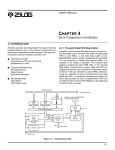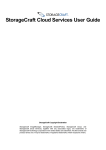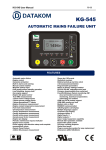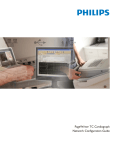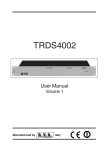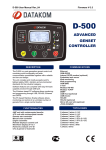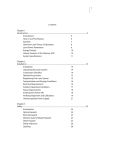Download 601-279B - NSG 3040 User Manual english.indd
Transcript
1 NSG 3040 EMC Test System USER MANUAL 601-279B NSG 3040 EMC Test System USER Manual NSG 3040 EMC Test System contentS 1 2 2.1 3 3.1 3.2 3.3 3.4 3.5 4 4.1 4.2 4.3 4.4 4.5 4.6 4.7 5 5.1 5.2 5.2.1 5.3 6 6.1 6.1.1 6.1.2 6.1.3 6.1.4 Explanation of symbols Introduction General description Standards and applications Burst test Combination wave test Mains quality test Magnetic fields with mains frequency (option) Pulsed magnetic fields (option) Safety instructions General Installation Installation of an EUT power switch Applicable safety standards Test execution User warnings - Generator User warnings - EUT Installation NSG 3040 installation Grounding the test system to the ground reference plane Rear ground brackets Mounting in a 19” rack Mainframe description Front panel EUT output connection High frequency ground terminal Surge output sockets Burst output socket 7 8 8 10 10 11 12 12 12 13 13 14 15 16 17 18 19 20 21 21 22 22 23 23 23 24 25 25 6.1.5 6.1.6 6.2 6.2.1 6.2.2 6.2.3 6.2.4 6.2.5 6.2.6 7 7.1 7.2 7.3 7.4 7.5 7.6 7.6.1 7.6.2 7.7 7.7.1 7.7.2 7.8 8 8.1 8.2 8.3 8.3.1 8.3.2 8.3.3 8.3.4 8.3.5 8.3.6 8.3.7 8.3.8 8.3.9 8.3.10 8.3.11 Indicator LEDs Touch panel and user interface Rear panel Mains power input EUT power input AC EUT mains input DC EUT input Ground connection point System interface connector 25 pin D sub Touch screen interface Main menu System window System window – General System window – Equipment System window – Communications System window – Monitoring EUT supply voltage & EUT supply frequency Test action by EUT fail input System window - SD-card properties Using the SD-card to update TSI software Removing and replacing the SD-card System window - Language Setting test parameters The red menu bar The bottom bar Electrical Fast Tranisient (EFT)/burst testing Test configuration for power line coupling Test configurations with external coupling Setting EFT/burst test parameters Voltage parameter Frequency Phase Coupling Burst time Repetition time Test duration Burst generator technical data 25 26 26 26 27 28 29 29 30 32 33 34 34 37 38 40 40 40 41 41 42 45 46 46 49 53 53 53 54 55 55 55 56 57 57 57 58 8.3.12 8.4 8.4.1 8.4.2 8.4.3 8.4.4 8.4.5 8.4.6 8.4.7 8.4.8 8.4.9 8.4.10 8.5 8.5.1 8.5.2 8.5.3 8.5.4 8.5.5 8.5.6 8.5.7 8.5.8 8.6 8.7 8.8 9 9.1 9.2 9.2.1 9.3 9.4 9.5 10 11 11.1 11.2 11.3 11.4 DTA selection window for burst Combination wave (CW)/surge pulse testing Test configuration for power supply line coupling Test configurations with external coupling Setting surge test parameters Voltage Impedance Phase Coupling Repetition time Test duration Combination wave generator technical data Mains Power Quality Teting (PQT) Sample graphs of voltage dips/drops Setting mains PQT test parameters Voltage U Var Phase Repetition time T-Event Test duration Dips & drops value Variation test Pulsed magnetic field option Power magnetic field in conjunction with MFO System interface functions Interlock Trigger to scope output signal Trigger signal with a surge pulse Synchronization output signal (sync) Pulse enable/next step input EUT fail input Internal coupling network Maintenance and function check General Cleaning Function check Calibration 58 58 58 59 60 60 61 61 61 62 62 63 63 64 65 65 65 66 66 66 67 67 70 70 71 72 73 73 73 74 74 75 77 77 77 78 79 5 6 11.5 12 13 13.1 13.2 13.3 13.4 14 15 Warranty CE conformity Technical data Dimensions/weight Options Accessories for IEC/EN 61000-4-11 Accessories for IEC/EN 61000-4-8/-4-9 System description Addresses 79 80 81 82 82 83 83 84 86 WARNING - Lethal danger from high voltages and the risk of radiating illegal electromagnetic interference. The NSG 3040 may only be installed and used by authorized and trained EMC specialists. The NSG 3040 must only be used for EMC tests as specified in these operating instructions. Personnel fitted with a heart pacemaker must not operate the instrument and must not be in the vicinity of the test setup while it is in operation. When the system is used in conjunction with options, accessories or other equipment the safety instructions concerning those devices must also be observed. NSG 3040 EMC Test System 1 Explanation of symbols The arrow symbol shown below indicates a note. Notes are used to provide additional information that will enable the user to achieve optimal test performance and efficiency. Example: WARNING - Never connect or disconnect the EUT while the system is performing a test. The exclamation point symbol shown below indicates a warning. A warning means that injury or death, as well as damage to the instruments and EUT, are possible if the instructions are not obeyed. Example: NOTE - This connection must not be confused with the EUT power input. 7 8 2Introduction 2.1 General description The NSG 3040 test system is a multifunction generator that simulates cableborne electromagnetic interference effects for immunity testing to international, national, and manufacturers’ standards. The system is designed to fulfill conducted electromagnetic compatibility (EMC) test requirements for compliance testing of household, office, light industrial or commercial equipment, including combination wave surge, Electrical Fast Transient (EFT) pulses, and Power Quality Testing (PQT). The NSG 3040’s modular architecture and industry standard interfaces allow it to be easily expanded and customized to meet individual testing needs. The system is designed as a series of interoperable function units with a master controller that handles the real time functions and communicates with the function modules. Each function unit contains a slave controller; all function units are connected together through their slave controllers and networked with the central master controller via a field bus (Interbus). Information concerning special features and their adjustable parameters are stored directly in the function modules. NSG 3040 EMC Test System This modularity enables the function units to be combined into customized test systems, and later reconfigured to address changing testing requirements. The function units can be readily modified to address the requirements of new standards, and new function units for new parameters may be incorporated in existing systems. The NSG 3040 is controlled through its standard user interface via a touch panel display. The system can also be controlled by a remote PC via its Ethernet interface. To ensure optimal user and equipment safety, only industry-standard and correctly specified plugs and sockets are used throughout. High voltage outputs are switch-protected. 9 10 3 Standards and applications The NSG 3040 test system is designed primarily for cable-borne transient interference tests as specified in the European generic standards IEC/EN 61000-6-1 covering equipment for household, office and light industrial use, and IEC/EN 61000-6-2 for applications in industrial environments. The NSG 3040 generates these tests in accordance with IEC/EN 61000-4-2, -4, -5, and -11. Accessories are also available for generating optional tests to IEC/EN 61000-4-8 and -9. The EU directive no. 89/336/EEC (for the assignment of the CE symbol) to these standards and to this type of equipment. ESD tests (in accordance with IEC/EN 61000-4-2) must be performed with a separate simulator, such as the Teseq NSG 435, NSG 437 or NSG 438. The standard calls for both air and contact discharges, and the simulator is supplied with special tips for each type of test. In the case of air discharges the simulator is discharged by holding the tip close to the EUT. Then, while depressing the trigger, moving it closer to the target area until a discharge occurs. Contact discharges occur with the tip of the simulator in direct contact with EUT. 3.1 Burst left Burst tests (in compliance with IEC/EN 61000-4-4) simulate the high voltage/high frequency interference pulses typically produced when an inductively loaded switch is operated. Without counter-measures, such interference may occur when a current through an electromagnetic device, e.g. motor, circuit breaker, relay, fluorescent lamp, etc. is switched off. This typ of interference can affect other equipment in either of two ways. Firstly, the interference can be coupled directly into the target equipment via the mains power cable. The interference can be transmitted from the source along the mains power cable connected to the target. Interference from the mains can NSG 3040 EMC Test System reach any other piece of equipment connected to the same power source in a similar way, whereby this does not all have to occur in the same section of a building. Alternatively, the interference can be capacitive coupled into any target device in the vicinity. The test system enables a test to be erformed using both coupling methods. The EUT is connected to the mains power socket on the front panel of the test system for the direct mains injection test. Capacitive coupled tests require the interference to be superimposed on the EUT cable via an external coupling unit that is connected to the Burst output on the front panel of the system. 3.2 Combination wave test The surge test, in compliance with IEC/EN 61000-4-5, duplicates high energy interference as experienced with a lightning strike. Generally speaking the interference finds its way into household equipment via the low voltage mains power supply. This kind of interference can affect equipment in either of two ways. Firstly, the interference can be coupled directly into the equipment via the mains supply. The interference is conveyed directly from the source (e.g. lightning strike to external power cables). Every item of equipment connected to this power source will be affected by the interference pulses. Alternatively, the pulses from the source of the interference or its associated mains cables can be coupled into other equipment positioned nearby. Surge pulse interference can also occur on signal and data lines through coupling effects and electrical discharges. The test system enables tests to be carried out using both coupling methods. The EUT is connected to the mains power socket on the front panel of the test system for the direct mains injection test. Externally coupled tests require the interference to be superimposed on to the EUT power feed cable or signal/data lines via an external coupling unit that is connected to the surge output on the front panel of the system. 11 12 3.3 Mains quality test The mains quality test includes the simulation of dips and drop-outs in the mains power supply in accordance with IEC/EN 61000-4-11 and for DC power supplies in accordance with IEC/EN 61000-4-29. A voltage dip is said to occur when the supply voltage falls considerably below the nominal level for a relatively short time, e.g. for a few cycles, whereas a drop-out means that the voltage falls to zero for a similar period. 3.4 Magnetic fields with mains frequency (option) Mains frequency magnetic field tests, or, POWERM tests, involve the simulation of the magnetic fields typically generated by the current flow in power supply cables as specified in the IEC/EN 61000-4-8 standard. Such magnetic fields may affect the operation of items of equipment that are sensitive to them. The NSG 3040 performs this test by causing a current to flow in a magnetic field coil such that the current and frequency produce a proportional field within the coil parameters. The magnetic field coils, available as accessories, are connected to the magnetic field option (MFO) which, in turn, is connected to the system. 3.5 Pulsed magnetic fields (option) Tests with pulsed magnetic fields, or PULSEM tests, simulate the kind of interference produced by surge pulses as a result of lightning strikes to buildings and other metallic structures such as free-standing masts, ground conductors, grounding networks, etc. as specified in IEC/EN 61000-4-9. Magnetic fields of this type may upset the operation of installations that find themselves within such fields. NSG 3040 performs this test by causing a heavy current to flow in a magnetic field coil such that the amplitude of the pulse current produce a proportional field within the coil parameters. The magnetic field coils, available as accessories, are connected to the surge pulse output socket via the INA 752 pulse shaping network. NSG 3040 EMC Test System 4 Safety instructions The NSG 3040 system and its with accessories operate at high voltages. WARNING - Improper or careless operation can be fatal. These operating instructions form an essential part of the equipment and must be available to the operator at all times. The user must obey all safety instructions and warnings. Neither Teseq AG, Luterbach, Switzerland, nor any of its subsidiary sales organizations can accept any liability for personal, material or consequential injury, loss or damage that may result from improper use of equipment and accessories. 4.1 General The NSG 3040 must be operated only by authorized and trained specialists. The generator is to be used only for the purpose specified by the manufacturer. The user is directly responsible for ensuring that the test setup does not cause excessive radiated interference which could affect other instrumentation. The test system itself does not produce any excessive EM radiation. However, the injection of interference pulses into a EUT can result in it and/or its associated cables radiating electromagnetic energy. To avoid unwanted radiation, the standards organizations recommend that the test setup be operated inside a Faraday cage. 13 14 WARNING - Because of its construction, the NSG 3040 is not suitable for use in an explosive atmosphere. WARNING - Persons fitted with a heart pacemaker must neither operate the instrument nor approach the test setup while a test is being executed. Only approved accessores, connectors, adapters, etc. are to be used to ensure safe operation. WARNING - The NSG 3040 will start a self test when it is switched on. This includes the function of the EUT coupling relays and the detection of the EUT-input power for synchronisation reason. Therefore the EUT-output is to be considered as carying EUT power all the time! 4.2 Installation The NSG 3040 test system conforms to protection class 1. Local installation regulations must be respected to ensure the safe flow of leakage currents. WARNING - Operation without a ground connection is forbidden! Two independent ground connections are necessary - one for the test system and one for the EUT. These must be connected back to the local permanent installation or to a fixed, permanent ground conductor. Operate the equipment only in dry surroundings. Any condensation that occurs must be allowed to evaporate before putting the equipment into operation. Do NSG 3040 EMC Test System not exceed the permissible ambient temperature or humidity levels. Use only officially approved connectors and accessory items. Ensure that a reliable return path for the interference current is provided between the EUT and the generator. The reference ground plane and the ground connections to the instruments, as described in the relevant test standards, serve this purpose well. The test system may only be opened upon specific instruction given by the manufacturer. Since the instrument works, on principle, with two independent power supplies (one for the generator and one for the EUT), the NSG 3040 must be disconnected from both sources before any modifications to the test setup are undertaken. Besides the mains connections themselves, certain components also operate at high voltages, and are not provided with any form of extra protection against accidental contact. 4.3 Installation of an EUT power switch The EUT input should be connected a properly rated power switch device, which should be located close to the test setup. In order to ensure an easy and quick access to the EUT power, the switch should be clearly and visibly labelled as a device for “EUT power on/off”. The in-house power distribution must be equipped with a proper circuit breaker and an emergency off button as per IEC 61010-1:2001. The test setup should only be accessible to trained personnel. Dimensioning of mains supply and rating of fuse protection of AC or DC power supply must conform with national prescriptions and EUT requirements. Inapropriate arrangement, mounting, cabling or handling of the EUT or the protective elements can hamper or negate the effectiveness of the NSG 3040’s safety features. 15 16 4.4 Applicable safety standards The NSG 3040 conforms to the safety requirements specified in IEC 348 and offers all the features necessary for save and efficient operation. The NSG 3040 was developed and is manufactured in compliance with ISO 9001. The system complies with the safety requirements of IEC/EN 61010-1 (Safety requirements for electrical equipment for measurement, control and laboratory use). Like all mains power-driven generators, the system is designed for high voltage working safety in accordance with VDE 0104. Interference immunity has been tested in accordance with EN 60326-1. It is the user’s responsibility to ensure that the test setup does not emit excessive electromagnetic interference (EMI) which might affect other equipment. The test system itself does not produce any excessive radiation; however, the injection of interference pulses into the EUT can result in the device and/or its associated cables radiating EMI. To avoid radiating unwanted interference the standards organizations recommend that the test setup be located in a Faraday cage. Since the purpose of the test system is to produce interference signals for interference immunity testing, the requirements in IEC/EN 61000-6-1,-2,-3,-4 concerning limiting the radiated EMI can only be complied with by operating the test system inside a Faraday cage. NSG 3040 EMC Test System 4.5 Test execution WARNING - The test area must be organized that no unauthorized persons have access during the execution of a test. If a safety contact (Interlock) is used as a means of access control to the test zone (e.g. a Faraday cage), then an additional contact connected in series is necessary to provide protection for parts of the EUT that are likely to be touched EUT, its accidentally. During a test, the EUT, its accessories and cables are to be considered live at all times. The test system must be stopped and the EUT supply disconnected before any work can be carried out on the EUT. This can be achieved simply by opening the Interlock circuit. The EUT is to be tested only in a protective cage or under a hood which provides protection against electric shock and all manner of other dangers pertaining to the particular EUT (see: User warnings - Generator). The safety instructions for all the instruments and associated equipment involved in the test setup. Test setup configuration is to be strictly in compliance with the methods described in the relevant standard to ensure that the test is executed in a compliant manner. 17 18 4.6 User warnings - Generator WARNING - Users must be aware of the following dangers that can occur during testing: Local burning, arcing, ignition of explosive gases. EUT supply current surge caused by a flashover or breakdown resulting from the superimposed high voltage. Disturbance of other, unrelated electronics, telecommunications, navigational systems and heart pacemakers through unnoticed high frequency radiation. Ground contacts, including the EUT ground, can be at elevated voltage levels that would make them dangerous to touch. NSG 3040 EMC Test System 4.7 User warnings - EUT WARNING - Users must be aware of the following dangers that can occur during testing: EUTs are often functional samples that have not yet been subjected to safety tests. It is therefore possible that the EUT could be damaged by internal overloads or may even start to burn. As soon as the EUT shows signs of being disrupted the test should be stopped and the power to the EUT switched off. Internal disruption of the electronics can result in the interference voltage or the EUT supply voltage being present on the EUT’s outer casing. Electrical breakdown or arcing from and within plugged connections that are overstressed by voltage during the test. Explosion of components with fire or fragmentation as a result of energy dissipated, e.g. from the resultant supply current or ignition of vaporized plastics materials. Faulty behavior by the EUT, e.g. a robot arm strikes out or a temperature controller fails, etc. 19 20 5Installation This chapter contains a short check-list with steps that should be taken before the instrument is switched on and put into operation. Upon delivery, check the packaging for signs of damage in transit. If the indicator panel on the shock-watch is colored it means that the package has suffered a shock during transit. Any damage should be reported immediately to the transportation company. Lift the NSG 3040 test system out of its packaging by grasping the mounted grips. NOTE: Do not dispose of packaging materials. All packaging should be retained in the event that the instrument or any of its accessories should need to be returned to a Teseq service center for repair or calibration. Using the following list, check that all the items ordered have been delivered: 1. 2. 3. 4. 5. 6. 7. 8. NSG 3040 generator User manual 1 Mains power cable for the test system 1 Dummy plug (interlock blind connector) 1 Ground cable (to ground reference plane) 1 EUT power input connector with cable 1 EUT power output connector Optional items, as ordered Check the instrument for signs of transport damage. Any damage should be reported to the transportation company immediately. NSG 3040 EMC Test System 5.1 NSG 3040 installation The mains power voltage indicated on the instrument must correspond with the local supply voltage (mains voltage: 85–240 VAC, universal power unit, mains frequency: 50–60 Hz). Mains switch Fuse 2x 3.15 AT Mains power supply To insert a fuse, pull the fuse-holder out of the connector, insert 2 x 3.15 AT (slow blow) into the holder and replace the holder. Plug the mains cable into a fuse cartridges power outlet with a solid ground connection. Note the polarity of all input and output connections. Place the test system so that there is sufficient free space around the cooling air inlets on both sides and behind the fan outlet on the rear panel. Switch the system on and operate as stated in thethis manual. 5.2 Grounding the test system to the ground reference plane As mentioned in the standard, the generator must be placed on a ground reference plane (GRP) which is connected to ground. A good high frequency ground connection between the test system and the GRP is absolutely essential for performing burst tests correctly. Connect the ground terminal on the front panel of the NSG 3040 to the GRP by means of the link and bolts supplied. 21 22 5.2.1 Rear ground brackets Rear ground brackets are optionally available to position the NSG 3040 securely without damaging the connectors when it must be placed with the rear panel on the floor with easy access to the touch screen. These brackets guarantee a solid ground connection to a the GRP. The stable housing construction allows the operator to make use of both back brackets as well as the handles. 5.3 Mounting in a 19” rack When the NSG 3040 test system is combined with other equipment, it can be useful to mount the instrument in a 19“ rack. The unit is 19” wide and 5U in height. NSG 3040 EMC Test System 6 Mainframe description 23 The NSG 3040 housing is specially designed for EMC applications and is EMC approved. 6.1 Front panel Color touch screen Burst LEDs output EUT Wheel sensitivity keys Wheel output Surge output Start, stop, pause keys High frequency ground point 6.1.1 EUT output connection This is the power output connection for the EUT. An EUT mains power connector to connect the EUT to the instrument is included with the system. The connector contains a phase pin (L: Live), Neutral pin (N) and a ground pin for the connections to the EUT. The pins in the connector must be correctly wired to the corresponding conductors in the EUT power cable. If the test system is connected to a DC power source for the EUT, the user must ensure that the polarity at this connector corresponds with that at EUT power connector. 24 N L Note: For DC-Power supplies L = Positive (+), N = Negative (-). The pins in the connector are designed for a maximum current of 16 A. WARNING - Never attempt to connect or disconnect an EUT while a test is being performed. 6.1.2 High frequency ground terminal This terminal provides a solid high frequency ground connection point to the test system. If an external CDN is connected then the ground strap must be connected from the CDN to the reference ground plane. There is no need to connect the ground connector from the generator itself, since the burst connector provides the reference ground from the generator to the CDN. High frequency ground terminal NSG 3040 EMC Test System In connection with the supplied ground strap, the NSG 3040 system may be efficiently connected to the reference ground plane. This ground link must be used for burst tests to obtain the best test results. 6.1.3 Surge output sockets These sockets (high, low) connect the surge output signal to an external CDN or to another external coupling unit. These coaxial sockets are also used to connect the internal generator to the optional magnetic field coil for tests with pulsed magnetic fields. The surge output is potential free (floating). The inner conductor of each connector is the surge high and surge low connection respectively, while the outer conductor (screen) is connected to the NSG 3040’s ground terminal. 6.1.4 Burst output socket This socket connects the instrument to an external burst coupling clamp for capacitive coupled burst tests on data lines, or to an external coupling network. 6.1.5 Indicator LEDs LED indicator Power on Pulse High voltage active EUT-Power on Error Function Instrument / system in operation Shows the occurrence of a pulses or a test event Shows that high voltage is present in the instrument Indicates when the EUT power supply is present at the EUT connector on the front panel Indicates that a system error has occurred During the boot period the LEDs switch on/off. 25 26 6.1.6 Touch panel and user interface The color 7” touch panel display controls include a wheel and 3 sensivity keys to select 1, 10 or 100 steps per wheel click. The Start, Stop and the Pause keys are used to control the test procedure. All function menus and submenus of the interface are described in, “Standard user interface”. 6.2 Rear panel Ethernet connection System interface Mains power connection with on/off switch and fuse Power input for the EUT 6.2.1 Mains power input The mains input is the connection point for input power for the NSG 3040. NOTE - Do not confuse the mains power input with the EUT power input. This input contains the mains power input connector, the mains switch and the mains fuses. NSG 3040 EMC Test System WARNING - Before operating the NSG 3040, make sure that the voltage range shown on the mains input module corresponds with the voltage of the local supply to which the instrument will be connected, and whether the fuses are correctly rated (2 x 3.15 AT). 6.2.2 EUT power input WARNING - Peak impulse voltages of up to 630 V can occur on these power lines. Such voltages can, under certain circumstances, destroy DC/AC power supplies. It is the user’s responsibility to ensure that adequate protection is provided at the source inputs. The power source to this connector provides the power for the EUT. Burst and surge interference signals are coupled into this supply line internally. Power is also delivered via this route for PQT (mains quality) testing purposes. WARNING - Because there are capacitors in the internal coupler, ground leakage currents of up to 4 A can occur in the EUT power supply network. The test system must therefore be correctly grounded and powered from a supply that is not protected by a residual current detector (RCD). 27 28 6.2.3 AC EUT mains input The EUT mains input is the connection point for the power supply of the equipment to be tested. The connector (HAN3a, 4-pin, from Harting) is a special 16 A type. A matching connector with 2 m of cable to connect the input to a normal mains outlet is included with the system. The connector comprises the pole contact (La, no.1), the variable voltage pole contact (Lb, no.3), the neutral return contact (N, no.2) and the ground connection to the EUT. Pin 3, Lb = Variable voltage Pin 2, N = Neutral Pin 1, La = Phase Pin 4, GND = Ground Wire colors and pin configuration Black: Blue: Brown: Green/yellow: Phase conductor Neutral return Variable voltage pole Ground conductor La Pin 1 Pin 2 Lb Pin 3 Pin 4 The additional variable voltage pole contact (Lb, no.3) enables a variac or alternative AC source, or a DC source to be connected for PQT tests. Thus, the voltage at the phase (L) line at the EUT output connector can be varied in relation with the voltage at this contact. NSG 3040 EMC Test System 6.2.4 DC EUT input Pin allocation for DC voltages: L = Positive (+), N = Negative (-) In of DC applications, the positive and negative lines are to be connected to La and N respectively. The polarity at this EUT power input connector must be the same as at the EUT output connector. The ground contact in the connector must be connected to a solid ground point. 30 Operating current 25 20 Wire 2.5 mm2 15 Wire 1.5 mm2 10 Wire 1.0 mm2 5 20 40 60 80 100 120 °C Ambient temperature 6.2.5 Ground terminal The ground terminal provides a solid connection point to the instrument’s chassis ground. 29 30 6.2.6 System interface connector 25 pin D sub This connection provides external device control and interlock capability. If the NSG is used as a stand alone unit, the interlock dummy connector must be plugged in for the system to start. Automated equipment, such as CDNs, variacs and step transformers, must be linked together. The interlock termination connector must be placed on to the system output plug of the last unit of the system. Pin # Sync.line Signal Remark Working direction 7 Sync0 Mains synchronization Mains voltage passes From a coupling netthrough the zero crossing work point with rising signal 5 Sync1 Interlock Puts the NSG 3040 into an From each controller/ idle state. The “Error” LED to interlock circuit lights in this state 6 Sync2 EUT fail EUT reports a fault to the From EUT to master NSG 3040 software. The controller test is stopped 18 Sync3 Trigger to oscilloscope To / from the active External device receives the function module, the Trigger-to-Scope signal from slave controller and the generator master controller 17 Sync4 Pulse enable From external device External device stops the to the slave and mastest run ter controllers NSG 3040 EMC Test System Pin # Sync.line Signal Remark 4 Sync5 Freely definable synch bus Freely definable, later signal options 16 Sync6 Freely definable synch bus Freely definable, later signal options 3 Sync7 2, 8, 15, 20 1, 9 14, 21 19 All others Reserved Internal usage (debug mode) GND 245 Sync bus ground return + 24 V Interbus +24 V supply Interlock return Interlock return line Interbus lines Working direction 31 32 7 TOUCH SCREEN INTERFACE The NSG 3040 touch screen interface (TSI) consists of: - A 7” color touch panel - A wheel for setting parameters - 3 wheel sensitivity keys labeled 1, 10, and 100 to denote the units - A start key (show symbol) to start tests - A stop key (show symbol) to stop tests - A pause key (show symbol) to pause tests CAUTION - Never use a metal, sharp or pointed tool for touching the panel. Use a soft towel for cleaning. Never use acid cleaning liquids. As soon the unit is powered and switched on, the boot procedure starts (approx. 30 seconds) and the start menu is displayed. NSG 3040 EMC Test System 33 Using the wheel and sensitivity keys The wheel and sensitivity keys are used to input values in fields on the touch screen. For example, to enter the value 445 in a field, the user must: Touch the field to select it for data entry. Press the 100 key and turn the wheel until the number 400 appears in the field. Press the 10 key and turn the wheel until the number 440 appears in the field. Press the 1 key and turn the wheel until the number 445 appears in the field. 7.1 Main menu Following boot up, the main menu displays. The main menu displays all the possible pulses or tests which are available to the user, depending on the NSG 3040’s configuration. If an option is grayed out, it means that the generator is equipped to handle those pulses but the necessary equipment is not connected. 34 A fully eqipped NSG 3040 test system typically comprises following modules: EFT/burst generator 5/50 ns as per IEC/EN 61000-4-4 Combination wave generator 1.2/50-8/20 µs as per IEC/EN 61000-4-5 Voltage dropouts/dips generator as per IEC/EN 61000-4-11 Pulsed magnetic field as per IEC/EN 61000-4-9 The “empty” buttons may be used for future applications. In the vertical red stripe on the right side of the screen, there are two buttons: “System” and the “Reset Interlock”. The “Reset Interlock” must be pressed if the interlock is open. The interlock must be closed before starting a test. 7.2 System window The following screen will be displayed when the “System” button is touched: Exit Factory settings Factory settings Touching the “Factory Settings” button will cause the properties associated with each of the buttons in the system window to be reset to the original factory settings. Exit Touch the “Exit” button to return to the main menu. 7.3 System window - General The following screen will be displayed when the user touches the “General” button: NSG 3040 EMC Test System The user can change setting by touching the buttons on the screen to toggle the values. If there are no options connected to the system: If an option is connected with a built in EUT switch like INA 6502 or external automated CDN, then the screen looks like If an option with a built-in EUT switch, such as an INA 6502 or an external automated CDN, is connected: If an automatic variac is connected: 35 36 During a surge test the NSG 304 will emit a beep to alert the user. The user can touch the button to turn the beep “On” or “Off”. Expert mode Expert mode should follow Interlock action, as that the order in which they are displayed. The user can set the “Expert mode” button to “Active” to change parameters during a running test. When the button is set to “Off” parameters can be changed only when the NSG 3040 is in Stop mode. Interlock action Setting the Interlock action button to “EUT Power on” will keep the power to the EUT on when the interlock is activated. Setting the Interlock action button to “EUT Power off” will cause EUT power to shut down when the interlock is activated. Voltage Uin Prior to starting a test, the user must measure the voltage at the power mains socket so that it can be used as the 100% reference point for variation tests. The value must be entered in the Voltage Uin field using the keypad button at the bottom of the window. Keypad The keypad button at the bottom if the window is activated only when the user selects a field that requires a numeric parameter (see section 8). Since the voltage measured at the power mains socket may vary depending on location and season, it is important to take an accurate measurement with a standard digital multi-meter. Exit Touch the “Exit” button to return to the system window without saving the settings. EUT OFF The “EUT on/off” button is used only when an option with a built-in EUT switch, such as an INA 6502 or VAR 6502, is connected to the NSG 3040. The NSG NSG 3040 EMC Test System 3040 itself does not have an EUT switch. Touching the button will turn the EUT switch on or off. OK Touch the “OK” button to save all settings and return to the system window. Factory reset Touching the “Factory Settings” button will cause the properties associated with each of the buttons in the system window to be reset to the original factory settings. 7.4 System window - Equipment By touching the “Equipment” button in the system window, the user can access a list of all internal and external generator modules, including firmware versions, serial numbers, calibration dates and certificate numbers. Up/Down If the system includes more than 5 modules, the user can scroll through the list by touching the “Up” and “Down” arrows on the right side of the screen. RE-Scan Usable in case some external units having been connected later on. Exit Touch the “Exit” button to return to the system window. 37 38 7.5 System window - Communication By touching the “Communication” button in the system window, the user can access Ethernet address information to integrate the NSG 3040 into a local area network or connect it to a PC. IP address The IP (Internet Protocol) address is unique address used to identify devices, such as computers, routers, printers and switches, on a computer network. The IP address can be entered using the wheel. Subnet A subnet is a logical grouping of connected network devices, which is used to partition networks into segments to simplify administration, performance and security. Devices on a subnet are usually located in close physical proximity and share a contiguous range of IP address numbers. A subnet mask defines the boundaries of an IP subnet and hides the network address portion of an IP address. The correspondence between subnet masks and IP address ranges follows defined mathematical formulas, by assigning a value of 1 to every digit in the network address portion of the binary IP address. These masked digits are not permitted to change when assigning IP addresses to devices on the local area network. The subnet mask can be entered using the wheel. NSG 3040 EMC Test System Gateway A gateway is a node on a network that serves as an entrance to another network. In enterprises, the gateway is the computer that routes the traffic from a workstation to the outside network that is serving the Web pages. In homes, the gateway is the ISP that connects the user to the internet In enterprises, the gateway node often acts as a proxy server and a firewall. The gateway is also associated with both a router, which use headers and forwarding tables to determine where packets are sent, and a switch, which provides the actual path for the packet in and out of the gateway. The gateway address, which is usually 0.0.0.0, can be set using the wheel. Port Network ports can be either physical or virtual connection points. The NSG 3040 has a physical Ethernet port that allows it to be connected to a PC or router. The port address for the NSG 3040 should be set to 1025 using the wheel. MAC address Media Access Control (MAC) technology provides a unique identification and access control for devices on an IP network. Media Access Control assigns a unique number, the MAC address, to each network adapter. The MAC address for the NSG 3040 network interface card, displayed in the communication screen, is unique to that card and cannot be changed. OK Touch the “OK” button on the right side of the screen to save all settings and return to the system window. EXIT Touch the “Exit” button on the right side of the screen to return to the system window without saving settings. 39 40 7.6 System window - Monitoring Touching the “Monitoring” button in the system window allows the user to access test monitoring features. 7.6.1 EUT supply voltage & EUT supply frequency The NSG 3040 does not have EUT supply measuring features. 7.6.2 Test action at EUT fail input If the EUT fail input signal is activated, the action after the input can be set to: The test action at EUT fail input setting allows the user to specify the action taken if the EUT stops functioning during a test. If the user sets the button to “Stop” and the EUT fails, the test will stop and the word “Stop” will be displayed on the touch screen. The test can be restarted by pressing the “Start” button on the front panel. If the user sets the button to “Pause” and the EUT fails, the test will go into pause mode and the word “PAUSE” will be displayed on the touch screen. The test can be continued by pressing the “START” button on the front panel. If the user sets the button to “CONT.”, the test will continue even if the EUT stops functioning. NSG 3040 EMC Test System OK Touch the “OK” button on the right side of the screen to save all settings and return to the system window. EXIT Touch the “Exit” button on the right side of the screen to return to the system window without saving settings. 7.7 System window - SD-card properties This feature is not yet implemented. The NSG 3040 includes an integrated SD-card reader which can be used to download software updates. 7.7.1 Using the SD-card to update TSI software The TSI firmware version can be checked by touching the “System” button on the main menu. 41 42 Touch the “EQUIPMENT” button. Identifies the TSI version To update the TSI software, first switch off the generator and remove all power cords and cables. Open the top housing cover of the generator as described below: 7.7.2 Removing and replacing the SD-card WARNING - Before opening the generator make sure that it is turned “OFF” and disconnected from all power and signal cables! To open the generator, the user must first remove the sides plates. Each side plate has 4 snap fixtures which will separate when outward pressure is applied. 1. Pull outward on the indentation in the front of the side plate (shown below). A blunt tool which will not scratch the paint on the panel may be used. NSG 3040 EMC Test System 2. Pull outward to separate the panel from the snap fixtures. 43 3. Remove the upper screws on both sides of the generator cover. 4. Remove the generator cover. The SD-card port is located at the right front of the generator, in back of the front panel. 1 2 Remove the upper screws on each side. Lift off the cover. 3 The SD-card is placed on the upper right position. 4 44 5 6 7 5. Press to release the SD-card. Remove the card from the NSG 3040. To install a new SD-card, proceed to step 7. 6 To download new software from a PC to the SD-card, insert the card in the SD port of the PC and copy the software to the SD-card. The file name must remain SUI3000AP.EXE. Remove the card from the PC. 7. Insert the SD-card in the NSG 3040. Follow steps 1 - 4 in reverse to replace the generator cover and side panels. Step 6. This example shows the SD-card as removable disk (F:) on the user’s PC. The drive letter may vary from PC to PC. NOTE: Do not change the SD firmware file name. 8. Restart the NSG 3040. The software will reboot automatically. 9. Touch the “System” button followed by the “Equipment” button to verify the firmware revision level. NSG 3040 EMC Test System 7.8 System window - Language By touching the “Language” button in the “System” menu, the user can select one of 5 languages for the TSI software (at this time only English available.). The NSG 3040 will automatically reboot if the language is changed. OK Touch the “OK” button on the right side of the screen to save all settings and return to the system window. EXIT Touch the “Exit” button on the right side of the screen to return to the system window without saving settings. 45 46 8 SETTING TEST PARAMETERS While the input fields differ for each type of test, the red side bar and bottom bar remain the same. The following examples use the Burst test window. Red bar Bottom bar 8.1 The red menu bar Exit Touch the “Exit” button on the right side of the screen to return to the system window without saving settings. EUT OFF EUT ON Touch this button to switch the EUT power on or off. Note that the EUT can work only in combination with an automated accessory, such as a variac or step transformer. WARNING - The EUT power output is always on, even if the EUT itself if switched off. NSG 3040 EMC Test System RAMP VALUE This button is active only if a rampable parameter is selected. All rampable parameters are identified by the grey ramp sign. If the parameter is ramped, the ramp sign will turn red. Touching the “ramp” button will open the window shown below that allows the user to set the parameters for automatically ramping the values of a multi-step test. Ramping mode Shows the ramping status. Touching this button will change the status from static to linear. In linear mode the user can set start, stop and step values. Start When this button is touched a red frame is displayed. The user can set the start value with either the wheel or the keypad. Stop When this button is touched a red frame is displayed. The user can set the stop value with either the wheel or the keypad. Step When this button is touched a red frame is displayed. The user can set the step value with either the wheel or the keypad. Step delay When this button is touched a red frame is dis played. The user can set the step delay value with either the wheel or the keypad. 47 48 OK Touch the “OK” button to save all setting and return to the test parameter window. Note: When a parameter has been ramped, its value cannot be changed in the Test parameter window. EXIT Touch the “Exit” button to return to the test parameter window without saving settings. ADD STEP Multi-step tests can be programmed manually in the Test parameters window using the “Add Step” button in the red menu bar. Touching the ”Add Step” button will open a test step window. The user can program a maximum of 10 test steps. As soon as a test step is programmed, “TEST 1/X” is displayed in the upper right corner, and the test can no longer be changed from the Test parameter window. All programmed steps must be deleted before resetting any other test parameters. When a test is initiated, it will always start with the first step and proceed to the last step. OK Touch the “OK” button to save all setting and return to the test parameter window. EXIT Touch the “Exit” button to return to the test parameter window without saving settings. NSG 3040 EMC Test System SHOW STEP The user can view, change the order of and delete individual test steps by touching the “show step” button on the red menu bar. The “Show step windows” displays the individual test steps in the order that they will be executed. UP / DOWN The “UP” and “DOWN” arrows on the right side of the show step window aree used to change the test step order. When the user touches a line number, a red frame will appear around the corresponding test step. The user can then touch the “UP” or “DOWN” button to move that step up or down in the list. DEL Touch the “DEL” button to delete an individual test step. OK Touch the “OK” button to save all settings and return to the test parameter window. EXIT Touch the “Exit” button to return to the test parameter window without saving settings. EXPERT MODE Expert mode allows the user to manually adjust some parameters with the wheel while a test is in progress, and is a fast, effective method of activating critical threshold values. Expert mode is available only for burst testing. 8.2 The bottom bar (The functions shown in the bottom bar of the test parameter window are available only in software revisions 1.1 and up) 49 50 LOAD USER TEST Touching this button will display all test files that have been created and saved by the user. Only files for the selected test will be displayed. In the example below, several burst tests are displayed. The user can scroll through the tests by touching the “UP” and “DOWN” arrows on the right side of the screen. The user can select a test by touching the button to the left of the test name. A red border will be displayed around the selected test. Touch the “OK” button to load the test and return to the test parameter window. NSG 3040 EMC Test System Touch the “Delete” button to delete a saved test. A window asking the user to confirm or cancel this action will be displayed. Touch “OK” to delete the file, or cancel to cancel this action. NOTE: Once a test has been deleted it cannot be restored. SHOW GRAPHICS Touching the “Show Graphics” button will display pulse graphs and coupling diagrams for the selected test. The user can view additional information by touching the “More” button, and can touch the “Back” button to page back. Touch “Exit” to return to the test parameter window. 51 52 KEYPAD The “Keypad” button is activated only when the user selects a parameter that requires a numeric entry. Touching this button will display a numeric keypad. The user can select numbers, touch “C” to clear an entry, and touch “Enter” to enter the value in the field. After touching “Enter” the keypad will close. SAVE TEST The “Save Test” button is used to save the current test to a file for later use. When the user touches the “Save Test” button a keyboard is displayed. The user can touch individual keys to enter a file name in the black bar above the keyboard. The “Del” key will delete all text entered and the “backspace” button (<--) will delete the last letter entered. Touching the “Enter” button will save the file under the name entered. All letters and numbers, as well as hyphens, spaces and dots, can be used in file names. The maximum file name is 40 characters, including spaces. The system will automatically generate a file extension to identify the type of test. For example, all burst tests will be given the extension EFT. Touch the “cancel” button to return to the test parameter window with saving the file. NSG 3040 EMC Test System 53 8.3 Electrical Fast Transient (EFT)/burst testing The generation of high voltage bursts and high frequency pulses is part of the EFT/burst package test required for in the international standard EN/IEC 61000-4-4. The NSG 3040 generates electrical fast transients, or bursts, of interference that simulate the interference that is generated when inductively loaded switches are operated. With their very steep rising and falling edges, these interference pulses spread over a frequency spectrum of over 300 MHz and may occur wherever electrical currents are switched off in connection with, motors, circuit breakers, relays, fluorescent lamps, etc. Therefore, nearly all the relevant standards concerning the testing of electronic equipment require the performance of burst tests. 8.3.1 Test configuration for power line coupling In a power line coupling test, the NSG 3040 generates the interference signal, which is superimposed on the EUT power signal. 8.3.2 Test configuration with external coupling In an externally coupled test, the interference signal is delivered through the NSG 3040’s coaxial burst output connector on the front panel and fed to an external coupling clamp. The signal is then applied to signal or data line cables. The same SHV type connector may also be used for connection of a 3-phase CDN or for a CDN suitable for 1-phase AC/DC >16 A. 54 Single spike Burst pulse package V 100% 90% V 50% 10% t tr tp ≤ 20% tBurst trep 1 f Burst t tr = 5 ns ± 30% tp = 50 ns ± 30% into 50 Ω tp = 50 ns –15 ns / +100 ns into 1000 Ω A Teseq CAS 3025 calibration set must be used with a minimum 400 MHz digital oscilloscope to accurately verify the EFT pulse parameters. 8.3.3 Setting EFT/burst test parameters Touch the “Burst” button in the main menu to open the window shown below. In this window, the user can modify the following parameters: Test pulse voltage, frequency and phase, external coupling, burst time, repetition time and test duration. NSG 3040 EMC Test System 8.3.4 Voltage parameter Touch the “polarity” button (ALT in the example) to select test polarity. Polarity values are: positive (POS), negative (NEG), or alternating (ALT). Touch the “voltage” button (200 V in the example) to enter the test voltage. A red frame will be displayed around the field. The voltage value may be entered using the wheel or the keypad. 8.3.5 Frequency Touch the “frequency” button (5 in the example) to set the test frequency. A red frame will be displayed around the field. The frequency value may be entered using the wheel or the keypad. Touch the “units” button (KHz in the example) to set the frequency unit. Frequency values are Hz and KHz. 8.3.6 Phase Touch the “Synch/Asynch” button (Asynch in the example) to activate the synchronization of test pulses to the EUT mains frequency. When this button is set to Asynch, the “phase value” button ( --- in the example) will display “---”. When this button is set to synch, the user must also set the phase value. To set the phase value, touch the “phase value” button. A red frame will be displayed around the field. The phase value may be entered using the wheel or the keypad. The value is in degree units and may range from 0 to 359. 55 56 8.3.7 Coupling Touch the “coupling mode” button (EXTERNAL COUPLING in the example) to select external, IEC or manual coupling. External coupling The burst pulses will be switched to the generator’s coax output, for connection to an external coupling clamp or a 3-phase CDN. IEC coupling EFT/burst interference is coupled by line or a single line or multiple lines versus the reference ground plane. Manual CDN This selection is for non-automated, external CDN like CDN 163 When IEC coupling is selected the above window is displayed. Touch the “individual line” buttons (L, N and PE) to change the coupling setting. The setting will be displayed as either and open or closed relay sign (the above example shows closed relay signs for all 3 lines). Burst coupling is always to the HF reference ground plane. Touch the “OK” button to save all settings and return to the EFT/burst settings window. Touch the “cancel” button to return to the EFT/burst settings window without saving the coupling settings. Touch the “show graphics” button to display the EFT/burst graphics with the selected coupling settings. NSG 3040 EMC Test System 8.3.8 Burst time Touch the “Burst time” button (15 in the example) to set the burst time. A red frame will be displayed around the field. The burst time may be entered using the wheel or the keypad. Touch the “units” button (ms in the example) to set the time unit. Time units are s, ms and u spikes. 8.3.9 Repetition time Touch the “Repetition time” button (300 in the example) to set the test repetition time. A red frame will be displayed around the field. The repetition time may be entered using the wheel or the keypad. Touch the “units” button (ms in the example) to set the time unit. Time units are s and ms. 8.3.10 Test duration Touch the “Test duration” button (120 in the example) to set the test duration time. A red frame will be displayed around the field. The duration time may be entered using the wheel or the keypad. Touch the “units” button (s in the example) to set the time unit. Time units are s, min, h and cont (continuous). 57 58 8.3.11 Burst generator technical data Parameter Pulse amplitude: Voltage step: Polarity: Frequency: Phase: Coupling: Burst time: Repetition time: Test duration: Value ± 200 V to 4.8 kV (in 1 V steps) - open circuit ± 100 V to 2.4 kV (50 Ω matching system) 1 V / 10 V / 100 V Positive / negative / alternate Hz: 100 to 99’999 kHz: 1 to 1’000 Asynchronous, synchronous 0° to 359º (in 1º steps) IEC / pulse output (external) μs: 1 to 99’999 ms: 1 to 99’999 s: 1 to 1’999 Spikes ms: 1 to 99’999 s: 1 to 4’200 (70 min) s: 1 to 99’999 min: 1 to 99’999 h: 1 to 1’000 Continous 8.3.12 DTA selection window for burst Direct Test Access is not available in the current TSI software version. 8.4 Combination Wave (CW)/Surge pulse testing The surge test generates high voltage surge pulses as specified in the international standard EN/IEC 61000-4-5 and ANSI C65.41. 8.4.1 Test configuration for power supply line coupling The test pulses are injected directly into the EUT power supply lines as they pass through the test system. The EUT obtains its power from the EUT power outlet on the front of the NSG 3040 where the voltage has the interference signal superimposed on it. NSG 3040 EMC Test System 8.4.2 Test configurations with external coupling In this mode, the interference pulses are switched to the surge Hi and Lo output sockets on the front panel, to which an external data line signal coupler can be connected. By using such an external signal coupler it is possible to superimpose the interference signal, as specified in the standards, on communications cables and other kinds of data lines. The same coaxial HV output sockets may also be used for connection of a 3-phase CDN. 1.0 0.9 0.5 T2 0.3 0.1 t T T1 max 30% Front time T1 = 1.67 x T = 1.2 µs ± 30% Time to half value T2 = 50 µs ± 20% 1.0 0.9 0.5 T2 0.3 0.1 T T1 Front time T1 = 1.25 x T 8 = µs ± 20% Time to half value: T2 = 20µs ± 20% t max 30% 59 60 WARNING - The use of improper equipment when measuring surge pulses can result in personal injury or equipment damage. NOTE - Teseq recommends using a TESEQ MD 200 or MD 200A differential probe in combination with a TESEQ INA 6560 Fischer-to-banana adapter for all surge tests. 8.4.3 Setting surge test parameters Touch the “Combination wave” button in the main menu to open the window shown below. In this window, the user can modify the following parameters: test voltage, impedance and phase, external coupling, repetition time and test duration. 8.4.4 Voltage Touch the “polarity” button (ALT in the example) to select test polarity. Polarity values are: positive (POS), negative (NEG), or alternating (ALT). Touch the “voltage” button (200 V in the example) to enter the test voltage. A red frame will be displayed around the field. The voltage value may be entered using the wheel or the keypad. NSG 3040 EMC Test System 8.4.5 Impedance Touch the “impedance button” (2 Ω in the example) to enter the impedance. A red frame will be displayed around the field. The impedance value may be entered using the wheel or the keypad. 8.4.6 Phase Touch the “Synch/Asynch” button (Asynch in the example) to activate the synchronization of test pulses to the EUT mains frequency. When this button is set to Asynch, the “phase value” button ( --- in the example) will display “---”. When this button is set to Synch, the user must also set the phase value. To set the phase value, touch the “phase value” button. A red frame will be displayed around the field. The phase value may be entered using the wheel or the keypad. The value is in degree units and may range from 0 to 359. Synch mode is only available if the EUT power is switched on. 8.4.7 Coupling Touch the coupling mode button (IEC COUPLING in the example) to select external, IEC or manual coupling. External coupling The surge pulse will be switched to the generator’s HV coax output, for connection to an external coupling devices but also for testing non-energized EUTs, also called components testing. IEC coupling When IEC coupling is selected the window shown below is displayed. Touch the individual line buttons (L, N and PE) to change the coupling setting. The setting will be displayed as either and open or closed relay sign. 61 62 Manual CDN This selection is for non-automated, external CDN like CDN 3083 Touch the “OK” button to save all settings and return to the combination wave settings window. Touch the “cancel” button to return to the combination wave settings window without saving the coupling settings. Touch the “Show graphics” button to display the combination wave graphics with the selected coupling settings. 8.4.8 Repetition time Touch the “Repetition time” button (300 in the example) to set the test repetition time. A red frame will be displayed around the field. The repetition time may be entered using the wheel or the keypad. Touch the “units button” (s in the example) to set the time unit. Time units are s and min. 8.4.9 Test duration Touch the “Test duration” button (10 in the example) to set the test duration time. A red frame will be displayed around the field. The duration time may be entered using the wheel or the keypad. Touch the “units” button (pulse in the example) to set the test duration. Test duration options are pulse and continuous. NSG 3040 EMC Test System 8.4.10 Combination wave generator technical data Parameter Pulse voltage (open circuit): Pulse current (short circuit): Impedance: Polarity: Phase synchronization: Coupling: Pulse repetition: Test duration: Value ± 200 V to 4.4 kV (in 1 V steps) ± 100 A to 2.2 kA 2 / 12 Ω Positive / negative / alternate Asynchronous, synchronous 0° to 359º (in 1º steps) IEC / external s: 10 to 600 1 to 9999 pulses Continuous 8.5 Mains Power Quality Testing (PQT) The PQT test involves the simulation of mains voltage dips and brief interruptions as specified in the international standard EN/IEC 61000-4-11. The NSG 3040 generates these disturbances on the EUT supply lines which are connected to the EUT power outlet socket. A dip occurs when the nominal voltage falls by a significant amount during a certain number of cycles or a fraction thereof. The standard specifies dips of 20, 30 and 60% (i.e. the voltage falls to 80, 70 and 40% of the nominal level respectively). An external variac, transformer or a DC power source can be connected to an extra input for freely selectable voltage dips. For tests with a DC power source the supply must be connected to the appropriate pin see sections 6.2.3 and 6.2.4. An interruption occurs when the supply voltage either disappears completely for a certain number of cycles (or falls to a value of less than 5% of its nominal value). Note: Dips and drops appear on the phase (L) line. 63 64 8.5.1 Sample graphs of voltage dips/drops u 70% 0 5 10 t (cycles) 10 t (cycles) a) Voltage dip (-30%) u 40% 0 b) Voltage dip (-60%) u t (cycles) c) Voltage dropout (-100%) NSG 3040 EMC Test System 8.5.2 Setting mains PQT test parameters Touch the “Dips & drop” button in the main menu to open the window shown below. In this window, the user can modify the following parameters: Test voltage variation, phase, voltage dip or drop duration, repetition time and test duration. 8.5.3 Voltage U Var If no automatic variac or automatic transformer is connected to the NSG 3040, the dips and drops voltage is always 0 Volt. If a manual voltage source is connected then the dips and drops level will correspond with the manually set variable voltage at the EUT input. 8.5.4 Phase Touch the Synch/Asynch button (Synch in the example) to activate the synchronization of test pulses to the EUT mains frequency. When this button is set to Asynch, the phase value button (90 in the example) will display “---”. When this button is set to Synch, the user must also set the phase value. To set the phase value, touch the phase value button. A red frame will be displayed around the field. The phase value may be entered using the wheel or the keypad. The value is in degree units and may range from 0 to 359. Synch mode is only available if the EUT power is switched on. 65 66 8.5.5 Repetition time Touch the “Repetition” time button (10 in the example) to set the test repetition time. A red frame will be displayed around the field. The repetition time may be entered using the wheel or the keypad. Touch the “units” button (s in the example) to set the time unit. Time units are us, ms, s, min and cycle. 8.5.6 T-Event Touch the “T-Event” button (10 in the example) to set the duration of the voltage dip or drop. A red frame will be displayed around the field. The T-event duration time may be entered using the wheel or the keypad. Touch the “units” button (ms in the example) to set the test duration. T-event duration options are us, ms, s, min, pulse and continuous. 8.5.7 Test duration Touch the “Test duration” button (3 in the example) to set the test duration time. A red frame will be displayed around the field. The duration time may be entered using the wheel or the keypad. Touch the “units” button (pulse in the example) to set the test duration. Test duration options are s, min, pulse and continuous. NSG 3040 EMC Test System 8.5.8 Dips & drops value Parameter Dips & drops: Uvar with optional variac: Uvar step transformer: Peak inrush current capability: Switching time: Phase synchronization: Repetition time: T-Event: Test duration: 8.6 Variation test 67 Value From EUT voltage input 100% to 0 V; 0% 0 to 265 V 0 to 115% U input 16 A continous to 550 A short-term, ±10% 0%; 40%; 70%; 80% 500 A (at 230 V) 1 to 5 μs (100 Ω load) Asynchronous, synchronous 0° to 359º (in 1º steps) µs: 40 to 99’999 ms: 1 to 99’999 s: 1 to 1’999 min: 1 to 35 Cycle: 1 to 99’999 µs: 20 to 99’999 ms: 1 to 99’999 s: 1 to 1’999 Cycle: 1 to 99’999 s: 1 to 99’999 min: 1 to 70’000 Event: 1 to 99’999 Continuous 68 Parameter Uvar with optional variac: Repetition time: Test duration: Repetition time: Test duration: Phase synchronization: Value 0 to 265 V (in 1 V steps); 0 to 115% (in 1% steps) 1 ms to 35 min. 1 to 99’999 cycles 1 ms to 5 s; 1 to 250 cycles (50 Hz) 1 to 300 cycles (60 Hz); abrupt 10 ms to 10 s 1 to 250 cycles (50 Hz) 1 to 300 cycles (60 Hz) 1 s to 99’999 min 1 to 99’999 events Continuous Asynchronous, synchronous 0° to 359º (in 1º steps) Automatic accessories for power quality test Automated accessories for PQT testing include the INA 6502 step transformer, the VAR 6501 single variac, and the VAR 6502 double variac. These accessories are fully compliant with the latest revision of IEC/EN 61000-4-11 (2004). Once detected, the functions of each of these accessories are displayed and can be controlled in the dips and drops parameter setting window. INA 6502 step transformer - UVar settings 0%, 40%, 70%, or 80% will be displayed. VAR 6501 single variac - Settings can be displayed in volts or % of Uin. Touch the “units button” (% in the example) to select volts or %. Note: Uin, the actual input voltage of the variac, must first be set in the general screen (see section 7.3) VAR 6502 double variac. Uin, the actual input voltage of the variac, must first be set in the general screen (see section 7.3). The value of Uin is variable with the double variac. NSG 3040 EMC Test System Operation of the accessories 1. Verify the input voltage selector setting and adjust it to the correct mains voltage value if required 2. Connect instrument power from the mains 3. Remove 25 pin Sub D plug at rear of NSG 3040 master controller 4. Connect this connector to X2 of the accessories 5. Connect master controller 25 pin output to X1 plug, using system interface cable delivered with the accessories 6. Connect EUT power out to NSG 3040 – EUT power input 7. Connect EUT power in to mains using EUT power in cable delivered with NSG 3040 8. Switch on accessories first 9. Switch on NSG 3040 All automated accessories will be automatically detected by the NSG 3040 firmware during the booting process. For proper operation of plug and play detection it is strongly recommended to power on the accessory and then the NSG 3040 main frame. Powering on the NSG 3040 main frame before the accessories may result in non-detection of accessories. 69 70 8.7 Pulsed magnetic field option The NSG 3040 can perform pulsed magnetic field tests as required by IEC/EN 61000-4-8 by adding the following accessories: an INA 701 or INA 702 magnetic field coil, combined with an INA 752 1.2/50 us pulse shape adapter. Parameter Field: Polarity: Repetition time: Impedance: Coil factor : Test duration: Phase synchronization: Value 1 to 1200 A/m (in 1 A/m steps) Positive / negative / alternate 5 s to 10 min. (in 1 s steps) 2Ω 0.01 to 50.00 1 to 9’999 pulses Continuous Asynchronous, synchronous 0° to 359º (in 1º steps) 8.8 Power magnetic field in conjunction with MFO To generate power line magnetic fields as required by IEC/EN 61000-4-9, Teseq offers both a standalone, manual solution and an automatic solution consisting of a MFO 650X power amplifier combined with an INA 701 or INA 702 field loop. Parameter Field: Frequency: Coil factor: Test duration: Value 1 to 40 A/m (in 1 A/m steps)* 50 / 60 Hz 0.01 to 99.99 1 to 9’999 pulses Continuous *) Further details see chapter “Accessories for -4-9.” NSG 3040 EMC Test System 9system interface functions 71 The system interface connector (25 pin D sub) has the following functions and signal line-to-pin allocations. Since time-critical information cannot be transferred quickly enough (transmission time for one message frame takes about 20 ms), an additional, the “synchrobus”, is used to speed transmission. The master controller and function units can all access this bus. The master controller also makes this bus available to other instruments via the sub D connector on the rear panel. It comprises mains synchronization, interlock and EUT fail functions. Signal Remark Mains syncrhonization Mains voltage goes through the zero From coupling network crossing point with rising signal level Interlock Connects / interrupts HV supply and EUT From each controller to power relay (2 wires) interlock circuit EUT fail Software will stop a test run if a fault From EUT to master occurs in the EUT caused by the test controller procedure and the EUT reports this fact Watchdog The controller watchdog puts this signal To the function module on the bus when it is overlooked by its to which an error signal controller (software error). applies Global start trigger With delay function Sync1 to Sync3 Working direction Any function unit or external instrument From/to the active funccan generate this signal, or an external tion module, the SC and instrument receives a trigger-to-scope MC signal Three freely definable synchronization Freely definable, bus signals later options for 72 9.1 Interlock Between Pin 5 (hi) and Pin 2, 8, 15, 20 (low). This connection is an integral part of the interlock safety circuit. If a number of function units are incorporated in a system then these connections can be “daisy-chained” together to form a single safety circuit. If no external interlock circuit is required then the shorting connection must be made using the dummy connector. Otherwise, system pulse generation will be blocked. An automatic EUT power on/off device (Circuit Breaker Option – CIB) is available as an accessory. This option enables the EUT power supply to be switched off, since the interlock function only blocks pulse generation. The interlock is a safety function and ensures that: The interlock forms a bus to which all instruments in a system are connected. The interlock feature can be connected to external safety devices (door contacts, test enclosure hoods, etc.). If any part of the interlock circuit is interrupted, all generator modules are inhibited from producing or switching high voltages. The power supply to the EUT can also be switched off with the circuit breaker option. Activation of this safety feature is reported to the master controller. The master controller is also notified when the interlock is reset. Once the interruption is over and the of the interlock has been acknowledged, then power is restored to the EUT and the EUT is reconnected to the interfer ence signal. The interlock function is implemented in hardware so that it will not be affected by software malfunctions. NSG 3040 EMC Test System 9.2 Trigger to scope output signal Between Pin 18 (hi) and Pin 2, 8, 15, 20 (low) Inactive state: At 24 V, active state: < 2.4 V Note: The trigger signal has a duration of approx. 50 µs. In burst and PQT testing its duration will change according to the length of the event (burst or voltage dip/dropout). 9.2.1 Trigger signal during generation of a mains dip or mains dropout The width of the trigger signal corresponds to the width of the mains voltage variation or drop-out. If the Tevent is changed then the width of the trigger pulse will change accordingly. 9.3 Synchronization output signal (sync) Between Pin 7 (hi) and Pin 2, 8, 15, 20 (low) Inactive state: At 24 V, active state: < 2.4 V The sync signal consists of a level that goes low for each cycle of the mains frequency. The reference is the signal at the power supply input (“EUT supply IN”). The position (time-wise) of the sync signal corresponds to the specified phase angle (converted into time, irrespective of the supply frequency). NOTE: The sync signal is only active while a test is in progress and Fsync is set to sync. 73 74 9.4 Pulse enable / next step input Between Pin 17 (hi) and Pin 2, 8, 15, 20 (low) Input open = Inactive, Input shorted = active If this input is activated during a test run by an external device, the test is halted, This is the same as the pause function in the control software.) The test will continue to run as soon as the input is made inactive. If the input is already active before a test is implemented then the test cannot start. 9.5 EUT fail input Between Pin 6 (hi) and Pin 2, 8, 15, 20 (low) Input open = Inactive, Input shorted = active This connection serves as a control input of the EUT conditions that can be activated externally. The EUT can activate this input if it is capable of reporting a disturbance effects caused during an EMC test. Such events are time/date stamped by the system and are stored together with the current test parameters for subsequent use in a test report. NSG 3040 EMC Test System 10Internal coupling network The NSG 3040 includes a built-in coupling/decoupling network (CDN) that conforms to IEC/EN 61000-4-4 for 1-phase supply with neutral and protective ground line. Parameter EUT supply: EFT (burst) Value 1-phase, output on IEC-socket 24 to 270 V rms, 50/60 Hz (Phase - Neutral), 400 Hz max. 1 x 16 A rms continuous (temp. controlled) 1 x 25 A rms for 30 min. 0 to 270 VDC, 16 A max. Standard coupling mode all lines to HF reference ground (GND) IEC/EN 61000-4-4 and ANSI (IEEE) C62.41 L, N, PE à ref GND Alternatively possible Any lines and combinations to ref GND: L à ref GND N à ref GND PE à ref GND L,N à ref GND L, PE à ref GND N,PE à ref GND 75 76 Combination wave pulse: (surge) PQT: Decoupling attenuation: Standard-conform pulse Mains decoupling: Connections: NSG 3040 EMC Test System IEC/EN 61000-4-5 Lines to ground (12 Ω) L àPE / N àPE / L, N àPE Line to line (2 Ω) N àL / L àPE / N àPE IEC/EN 61000-4-11/-4-29 Dips & drops to phase L Remanent pulse voltage 15% max. Mains side crosstalk 15% max. 1.2/50 μs up to 4.4 kV 8/20 μs up to 2.2 kA 1.5 mH 0%/+35% Pulse inputs from generator Cable connector for EUT supply Power inlet for CDN 11 Maintenance and function check 11.1 General There are no components in the NSG 3040 that are accessible to users for either maintenance or calibration purposes. The NSG 3040 housing must not be opened by the user. If maintenance or repair is necessary, the system must be sent to an authorized Teseq service center. The only maintenance tasks which may be performed by the user are: - Cleaning the outer housing - Performing function checks - Verifying pulse parameters - Adding or exchanging modules The only exception concerns the exchange of modules or the upgrading of the system with new modules. In such cases the instructions accompanying the modules are to be strictly observed. 11.2 Cleaning In general a moist cloth is sufficient for cleaning the outer housing of the NSG 3040, including the touch panel. If necessary, a small amount of a mild, nonfoaming household cleanser may be mixed with water and applied with a cloth. No chemicals (acid, etc) should be used for cleaning. Before cleaning the system, be sure that it is switched off and the mains power cable is unplugged from the supply. 77 78 11.3 Function check The safety measures described previously must be strictly observed while carrying out a function check. When the NSG 3040 is switched on the power LED should light up. If it does not, then check the mains power connection, the fuses and cabling. When it has successfully powered on, the NSG 3040 will perform an automatic diagnostic routine. The NSG 3040 will not perform tests when the interlock circuit is open. If the following window appears: Make sure that all selected test parameters are within specified and acceptable limits. Pulse generation can be observed at the output connectors by means of an oscilloscope. This is a practical way to check that the system is functioning correctly but should never be used for reference or calibration purposes. Do not connect an oscilloscope directly to the NSG 3040 as it may exceed the oscilloscope’s maximum input voltage. Teseq recommends using an MD 200 or MD 200A differential probe with the INA 6560 banana adapter. NSG 3040 EMC Test System 11.4 Calibration The combination of high voltages and high frequencies in a single pulse makes the calibration of EMC pulse generators particularly demanding and difficult. Teseq has one of the few accredited test laboratories that is capable of performing pulse generator calibrations. 11.5 Warranty Teseq warrants this instrument to be free of defects in materials and workmanship for a period of 2 years, effective from the date of purchase. During this period, any defective component part will be repaired or replaced free of charge or, if necessary, the instrument will be replaced by another of equivalent value. The method of repair/replacement will be at Teseq’s sole discretion. Excluded from warranty are damage or consequential damage caused by negligent operation or use as well as the replacement of parts subject to degradation. The warranty is rendered invalid by any attempt to modify or repair the instrument on the part of the customer or a third party. Theinstrument is to be returned in its original packaging. Teseq can accept no responsibility for damage in transit. 79 80 12 CE conformity The NSG 3040 is CE-certificated. The following standards apply: Type of standard Standard number Remark Product family standard EN 61010 Safety requirements for electrical equipment for use in measurement, control, regulation and laboratory applications Generic standard Electromagnetic compatibility (EMC); generic standard for interference radiation; Part 6.3 for residenEN 61000-6-3 tial, business and trade applications as well as small businesses Generic standard Electromagnetic compatibility (EMC); generic stanEN 61000-6-4 dard for interference radiation; Part 6.4 industrial applications Generic standard EN 61000-6-1 Electromagnetic compatibility (EMC); generic standard for interference immunity; Part 6.1 for residential, business and trade applications as well as small businesses Generic standard EN 61000-6-2 Electromagnetic compatibility (EMC); generic standard for interference immunity; Part 6.2 for industrial applications Product family standard EN 60326-1 Electrical equipment for measurements, control and laboratory use. Since the purpose of the NSG 3040 is to produce interference signals, emissions limitations can only be complied with if the generator is operated inside a Faraday cage. Since CE emissions requirements cannot be fulfilled as stated in the standards, deviations from these requirements are explained in appendix to the NSG 3040’s conformity declaration. Deviations from the requirements are stated and explained in the appendix to the conformity declaration. Interference immunity has been tested successfully as per EN 61326-1. NSG 3040 EMC Test System 81 82 13 Technical data 13.1 Dimensions/weight Parameter Dimensions NSG 3040: Weight NSG 3040: Value W: 449 mm (17.7”); H: 222 mm (8.75”; 5 HU); D: 565 mm (22.2”) 22 kg (48.5 lb) 13.2 Options Model CDN 3063-C32 CDN 3063-C63 CDN 8014/8015 CDN 163 CDN 117/118 CAS 3025 MD 200 (A) MD 300 NSG 3040 EMC Test System Description Combined surge & burst coupling network for 480 VAC Ph-Ph, 32 A Combined surge & burst coupling network for 480 VAC Ph-Ph, 63 A Capacitive coupling clamp for burst Burst coupling network 100 A per phase (coupling all to ref ground) Coupling networks for signal/ data lines (surge) Burst/EFT verification set Voltage differential probe Current probe 13.3 Accessories for IEC/EN 61000-4-11 Model INA 6501 INA 6502 VAR 6501 VAR 6502 VAR 6503 Description Manual step transformer, 16 A, 0/40/70/80% Automatic step transformer, 16 A, 0/40/70/80% Automatic variable transformer, 7.5 A Automatic variable transformer, 2 x 16 A Manual variable transformer, 7.5 A 13.4 Accessories for IEC/EN 61000-4-8/-4-9 Model MFO 6501 MFO 6502 INA 701 INA 702 INA 753 Description Manual magnetic field option -4-8 Automatic magnetic field option -4-8 Magnetic field loop 1 x 1 m; with MFO max. 3.6 A/m -4-8; Surge* max. 1200 A/m -4-9 Magnetic field loop 1 x 1 m ; with MFO max. 40 A/m -4-8; Surge* max. 1200 A/m -4-9 *) Pulse shape adapter INA 753 recommended to surge generator Pulse shape adapter 83 84 14 System description Description Housing Mains on/off Indicator LED’s on front panel Safety functions Ambient conditions Self-test Relevant safety standards Relevant EMC standards Test system for EMC tests with mains-borne interference in accordance with the IEC/EN 61000-6-1 and 2 standards for burst, surge and mains quality tests. Operation via touch-screen or software-wise via a PC link Ethernet TCP/IP interface. Pulse output to external coupling networks. Housing for bench-top or rack use. Bench-top housing made of metal with moulded plastic front panel. Supplementary rack-mounting kit. On/off switch on rear panel of the instrument Power on: LED, yellow Pulse: LED, green High voltage active: LED, red EUT power on: LED, green Error: LED, red Main fuses, interlock, EUT fail input +5° to 40°C, +20 to 80% relative humidity (non-condensing), 68 to 106 kPa atmospheric air pressure Routines for functional self-test IEC 61010-1 safety requirements for electrical equipment used for measurement and control purposes as well as laboratory use IEC/EN 61000-6-1 and 2; generic standards for electromagnetic interference immunity NSG 3040 EMC Test System NOTES 85 Headquarters Teseq AG 4542 Luterbach, Switzerland T + 41 32 681 40 40 F + 41 32 681 40 48 sales @ teseq.com www.teseq.com Manufacturer Teseq AG 4542 Luterbach, Switzerland T + 41 32 681 40 40 F + 41 32 681 40 48 sales @ teseq.com China Teseq Company Limited T + 86 10 8460 8080 F + 86 10 8460 8078 chinasales @ teseq.com France Teseq Sarl T + 33 1 39 47 42 21 F + 33 1 39 47 40 92 francesales @ teseq.com Germany Teseq GmbH T + 49 30 5659 8835 F + 49 30 5659 8834 desales @ teseq.com Japan Teseq K.K. T + 81 3 5725 9460 F + 81 3 5725 9461 japansales @t eseq.com Singapore Teseq Pte Ltd. T + 65 6846 2488 F + 65 6841 4282 singaporesales @ teseq.com Switzerland Teseq AG T + 41 32 681 40 50 F + 41 32 681 40 48 sales @ teseq.com UK Teseq Ltd. T + 44 845 074 0660 F + 44 845 074 0656 uksales @ teseq.com USA Teseq Inc. T + 1 732 417 0501 F + 1 732 417 0511 Toll free +1 888 417 0501 usasales @ teseq.com To find your local partner within Teseq’s global network, please go to www.teseq.com Teseq is an ISO-registered company. Its products are designed and manufactured under the strict quality and environmental requirements of the ISO 9001. © November 2009 Teseq Specifications subject to change without notice. All trademarks recognized. This document has been carefully checked. However, Teseq does not assume any liability for errors, inaccuracies or changes due to technical developments.






















































































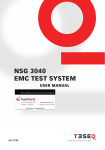
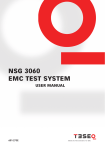
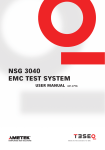
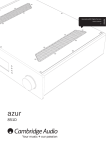
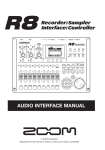
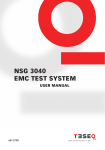

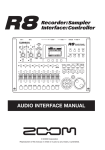
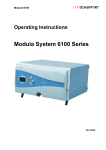
![[PDF:4.2MB]](http://vs1.manualzilla.com/store/data/005828831_1-fe8cebe621cde38b99682d8c012568df-150x150.png)

